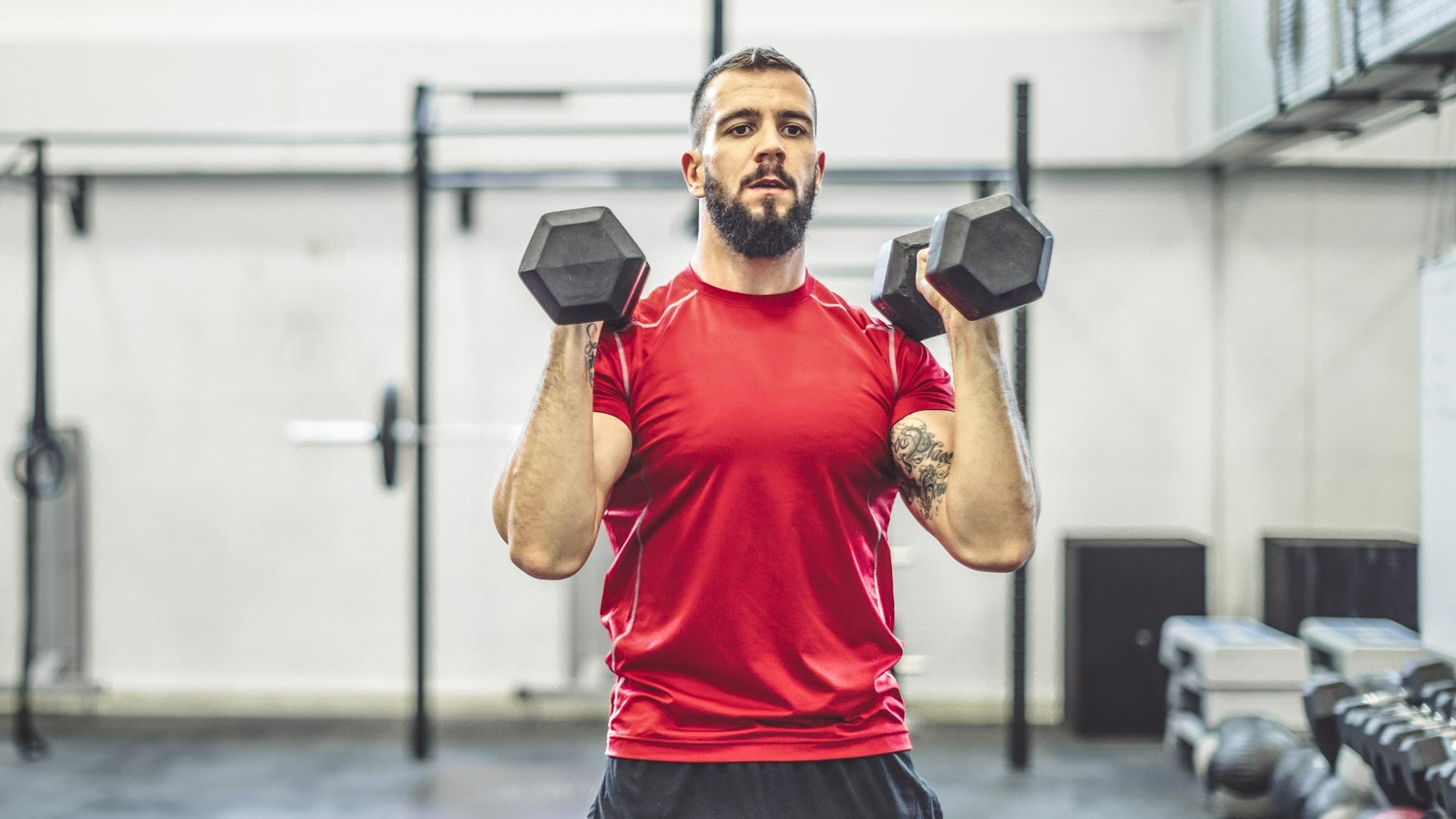Forget sit-ups — I tried this 12-minute standing dumbbell workout to blast my abs
It actually hits your whole body

While sit-ups and crunches are an effective way to train your core, you can work your abs just as well with a standing abs workout, and this 12-minute dumbbell workout not only hits the core but also the major muscle groups in your upper and lower body.
The advantages of standing workouts are that they are easier to follow without having to get up and down, and while having a yoga mat to stand on is useful, it’s not as essential as when you’re doing a workout with floor-based exercises.
One piece of kit you do need for this 12-minute standing dumbbell workout is a set of dumbbells. Or ideally two different weights, or even adjustable dumbbells so you change the load quickly in between exercises.
How to do the 12-minute standing abs workout
The workout has been designed by fitness duo Mr and Mrs Muscle and you can watch it on YouTube. While it’s pitched as an abs workout, it actually hits the whole body. You do two rounds of six exercises, working for 45 seconds and then taking a 15-second rest.
I slipped it into a lunch break and it’s a great standalone session, but if you have more time you can also combine it with another abs workout to add more core moves while also training the rest of your body.
Here are a few takeaways I had after doing the abs workout that it’s worth knowing ahead of time.
It was more of a full-body workout
While the title of the video is standing abs workout, I found it worked the entire body and probably felt it more in my shoulders than my core, partly because I very rarely train my arms and shoulders at all.
Through various compound exercises you will hit muscles all over your body and while the core is involved with every move, be prepared to challenge your legs and upper body as well.
There are a lot of combination exercises
To get the most effective workout done in just 12-minute most of the exercises you do are combination moves, where you do a lower-body exercise while also moving your arms with the dumbbells.
For example you swing the dumbbells in front of you while doing reverse lunges, and raise the weights above you in between doing glute kickbacks. I’d much rather do a short workout with these combo moves than a longer one doing the exercises individually.
So, I liked this approach a lot, but it means the moves are harder to do perfectly. Pay close attention to the instructor’s form, but don’t rush each rep to keep pace with her if you’re struggling — I found that it’s easy to lose your balance if you do.
You need more than one set of dumbbells
I only had one set of dumbbells to hand during the workout and they were too heavy for a lot of the exercises. I modified them to just use one dumbbell at times, but it’s definitely handy to have two or more sets of weights available so you can pick the right one for each exercise, and a set of adjustable dumbbells would be best of all since you can change the weight quickly between sets.
If in doubt, grab a lighter weight
This might be down to my lack of upper body strength, but with most of the moves I’d have gone with a very light dumbbell if I had one available.
Maintaining the right form throughout the long sets of each exercise is hard with a heavy weight, and it can pull you off balance when you’re trying to combine a lower-body move with an arm raise, swing or curl, which you have to do several times during the session.
If you trying to decide which weight to pick for each move, I'd opt for the lighter one, at least first time around.
Look out for the exercise guides during your rests
The rest periods in the workout fly by and you might want to grab a drink in the limited time you have, but during the first round at least I found it worthwhile to watch the exercise guide that shows on screen during the rests, so I knew what I was doing as soon as the timer starter on the exercise.
More from Tom's Guide
Get instant access to breaking news, the hottest reviews, great deals and helpful tips.

Nick Harris-Fry is an experienced health and fitness journalist, writing professionally since 2012. He spent nine years working on the Coach magazine and website before moving to the fitness team at Tom’s Guide in 2024. Nick is a keen runner and also the founder of YouTube channel The Run Testers, which specialises in reviewing running shoes, watches, headphones and other gear.
Nick ran his first marathon in 2016 after six weeks of training for a magazine feature and subsequently became obsessed with the sport. He now has PBs of 2hr 27min for the marathon and 15min 30sec for 5K, and has run 13 marathons in total, as well as a 50-mile ultramarathon. Nick is also a qualified Run Leader in the UK.
Nick is an established expert in the health and fitness area and along with writing for many publications, including Live Science, Expert Reviews, Wareable, Coach and Get Sweat Go, he has been quoted on The Guardian and The Independent.
